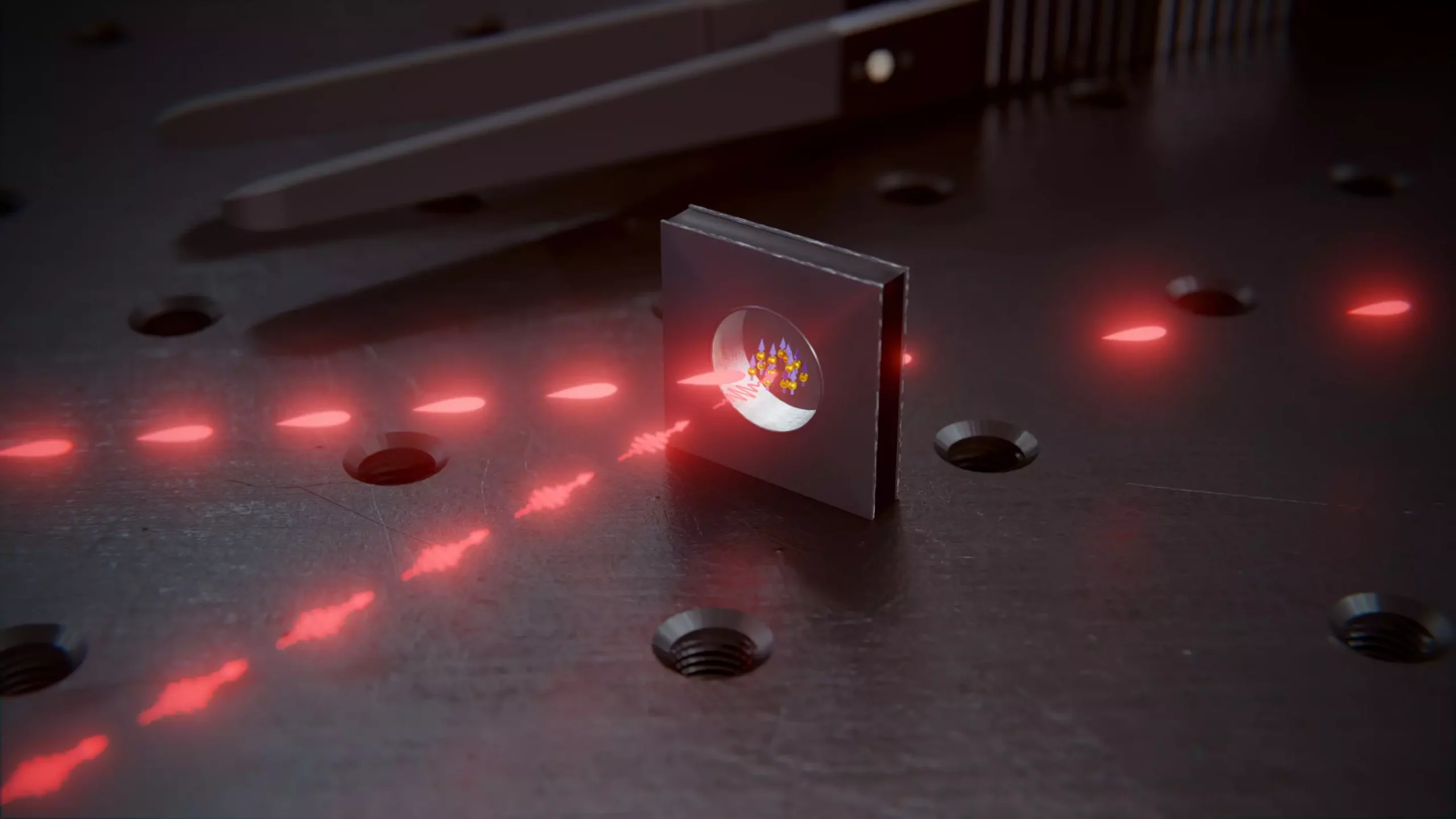Quantum technologies have the potential to revolutionize our lives, much like the internet and mobile phone networks have done. With the aim of tap-proof message transmission and connecting quantum computers, quantum networks require memory elements to store and route information temporarily. Researchers at the University of Basel have made significant progress in this area by developing a quantum memory element that is micro-fabricated and suitable for mass production. In a recent publication in Physical Review Letters, Professor Philipp Treutlein and his team discuss their innovative approach to building a miniature quantum memory element based on atoms in a tiny glass cell.
Light particles, or photons, are ideal for transmitting quantum information. They can be used to send quantum information through fiber optic cables, satellites, or into a quantum memory element. The challenge lies in storing the quantum state of the photons as precisely as possible within the memory element and converting it back into photons when needed.
Overcoming the Challenge of Size and Mass Production
In a previous experiment, the University of Basel researchers successfully demonstrated the storage of quantum information using rubidium atoms in a glass cell. However, the cell used in that experiment was handmade and several centimeters in size. To make the quantum memory element suitable for practical applications, it needed to be smaller and amenable to mass production.
To achieve this, Treutlein and his collaborators employed several clever techniques. They obtained a much smaller cell, measuring only a few millimeters, from the mass production of atomic clocks. To ensure a sufficient number of rubidium atoms for quantum storage despite the reduced cell size, they increased the vapor pressure by heating the cell to 100 degrees centigrade. Additionally, the atoms were exposed to a magnetic field 10,000 times stronger than Earth’s magnetic field, which allowed for more efficient quantum storage of photons using an additional laser beam. With these modifications, the researchers were able to store photons for approximately 100 nanoseconds. This may not seem like a long time, but considering that free photons would have traveled 30 meters in that timeframe, this is a significant achievement.
The most exciting aspect of this breakthrough is the potential for mass production. By using a single wafer, the researchers can produce around 1,000 miniature quantum memory elements for photons in parallel. This opens up possibilities for scaling quantum technologies in a way that was previously unimaginable.
In the current experiment, the storage of strongly attenuated laser pulses was demonstrated. However, the future goal is to store single photons in these miniature cells. Collaborating with the CSEM in Neuchatel, Treutlein plans to optimize the format of the glass cells to maximize the storage time of photons while preserving their quantum states.
The development of a micro-fabricated quantum memory element marks a significant advancement in quantum technology. With the ability to mass-produce miniature cells for quantum storage, researchers at the University of Basel have paved the way for the future of quantum networks and quantum computing. As further optimizations are made and more efficient storage methods are developed, the potential for quantum technologies becomes even more promising. The achievement of a miniature quantum memory element brings us one step closer to realizing the full potential of quantum technologies in our everyday lives.


Leave a Reply